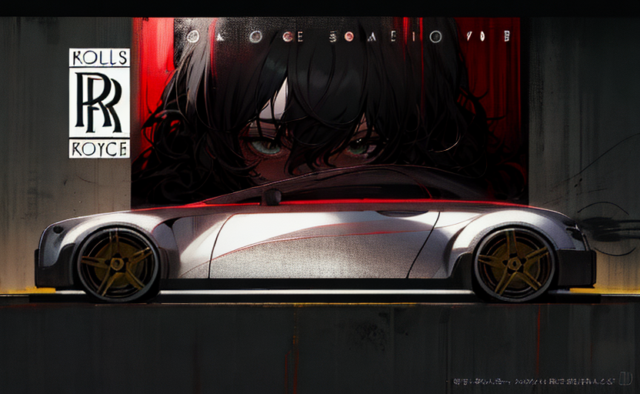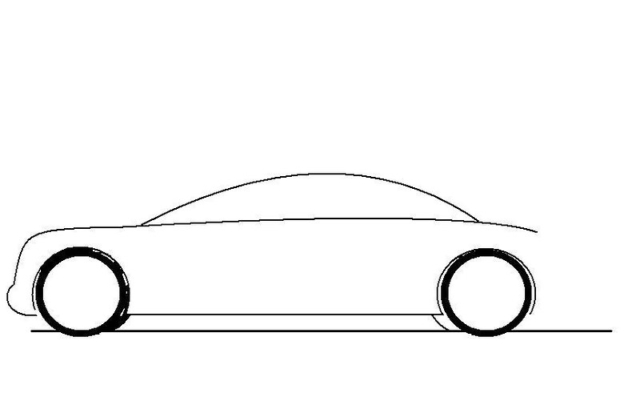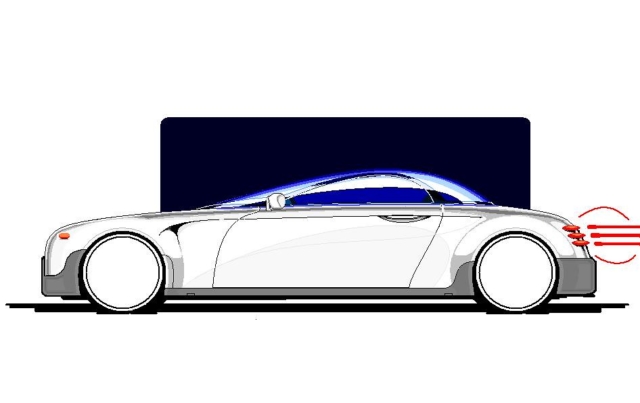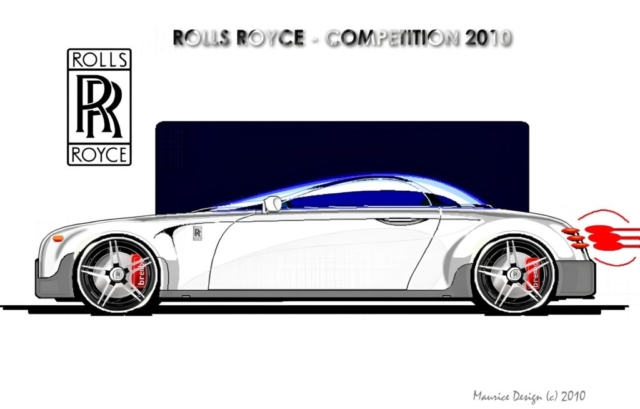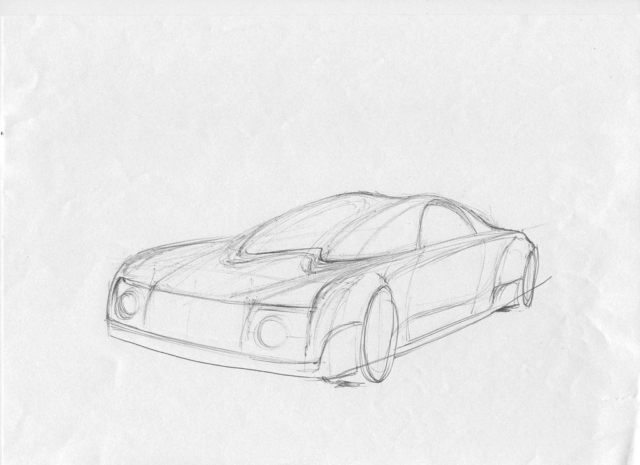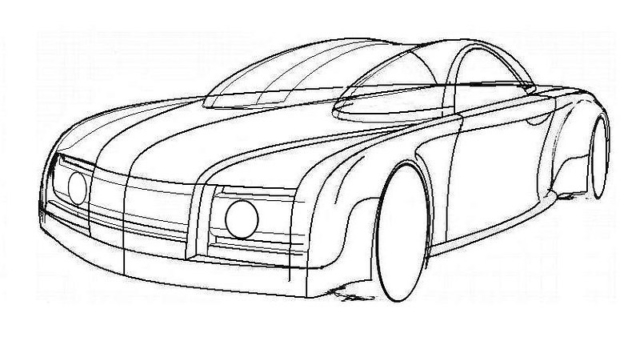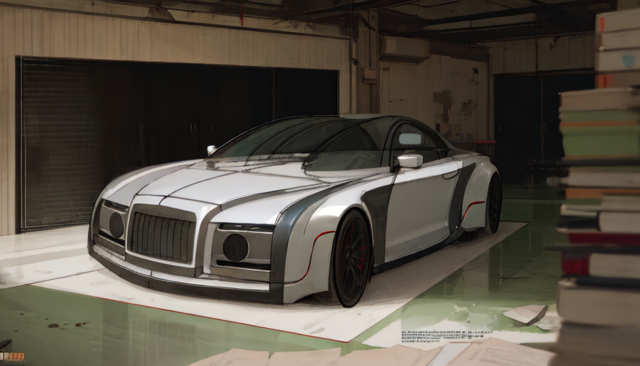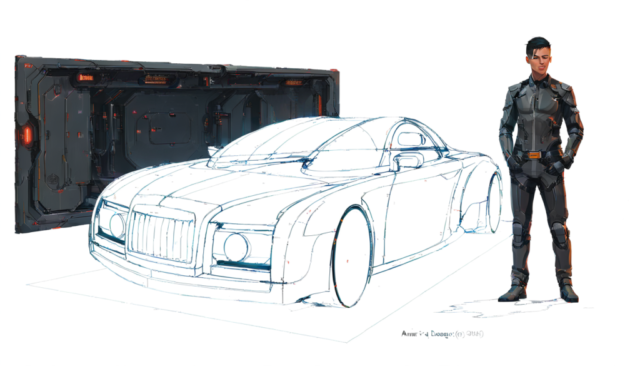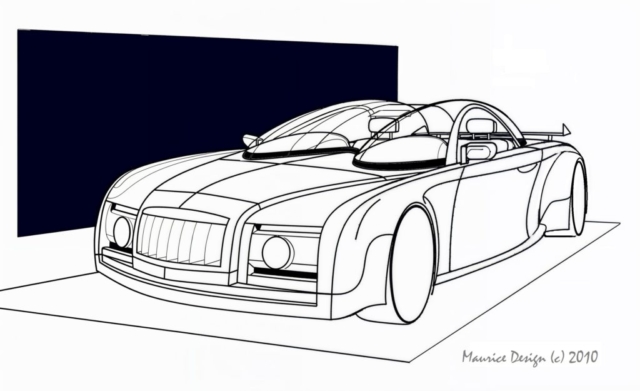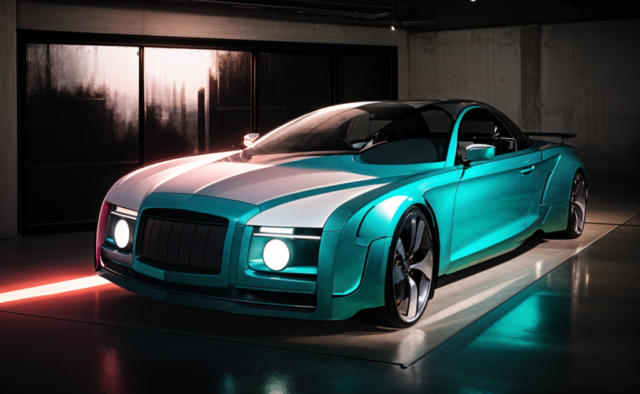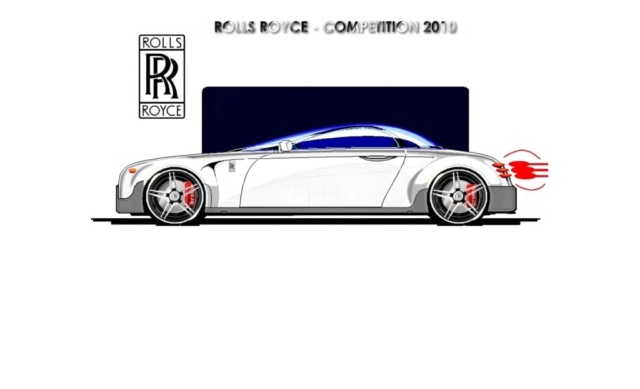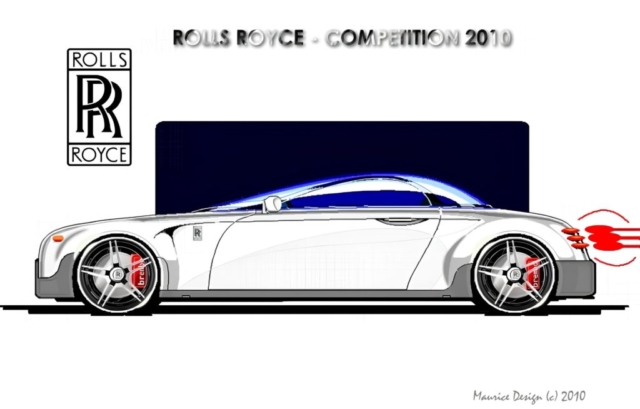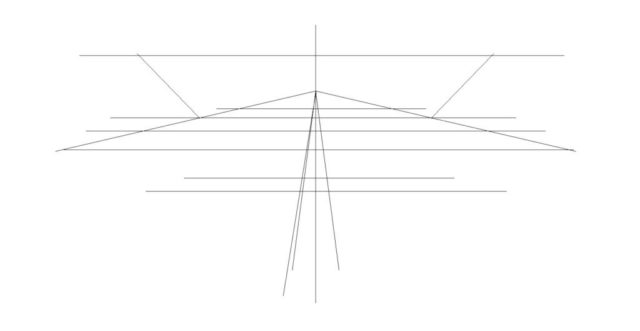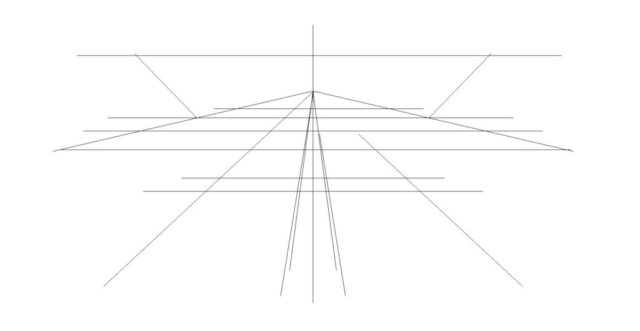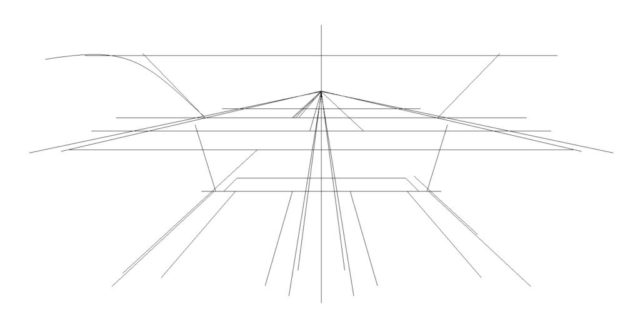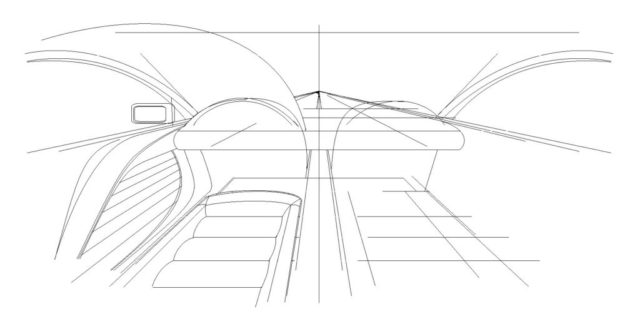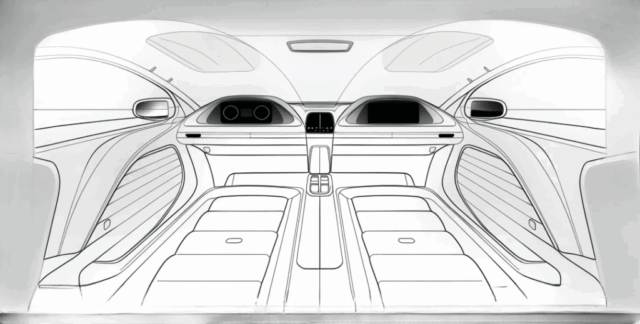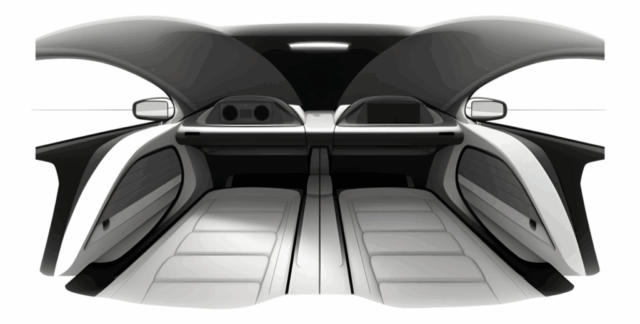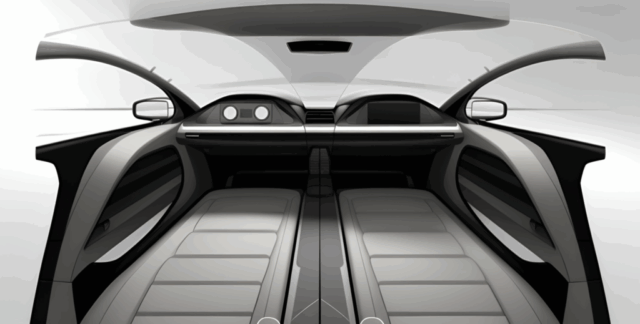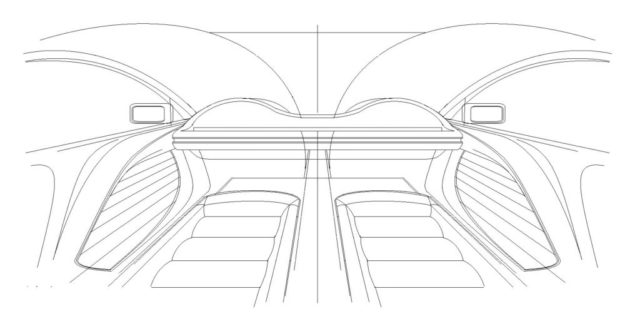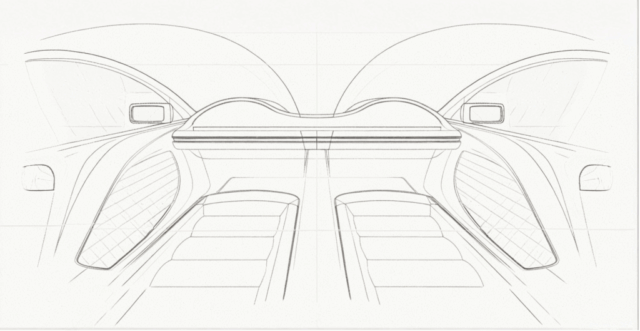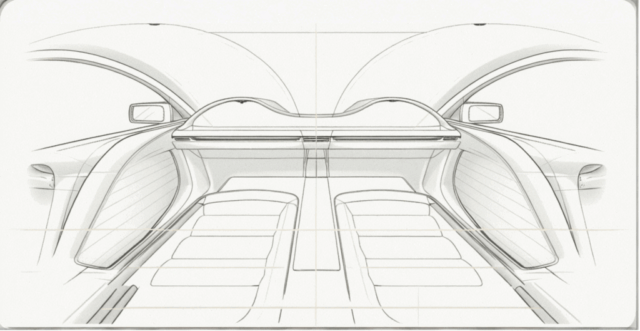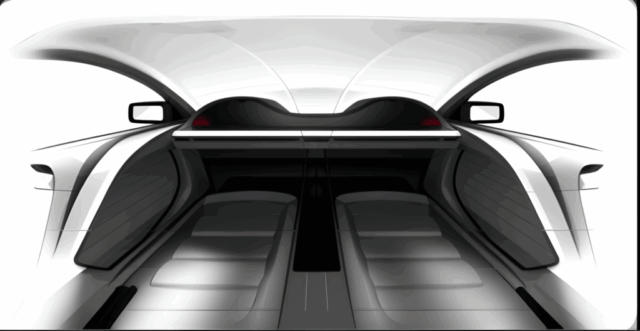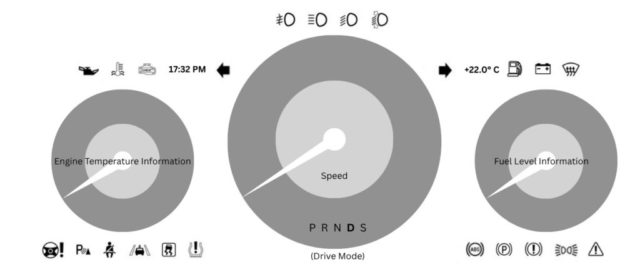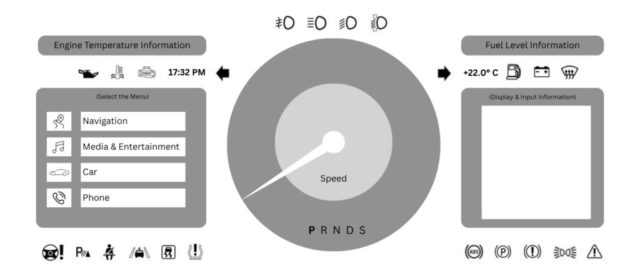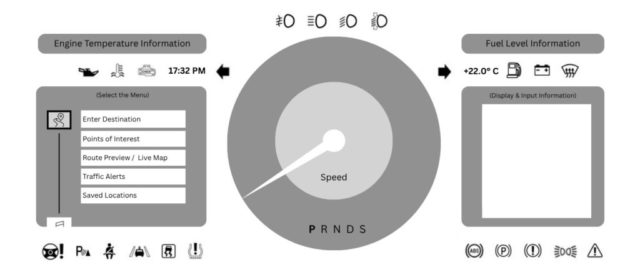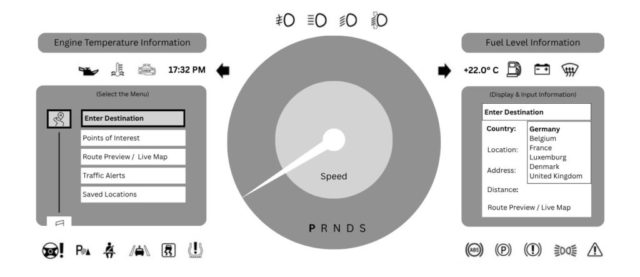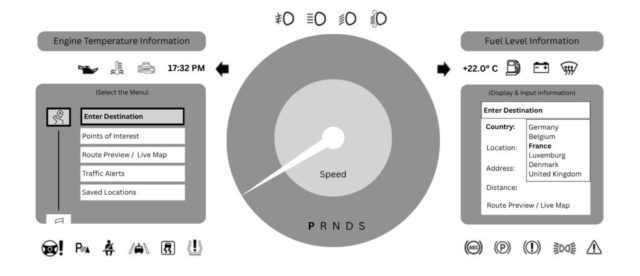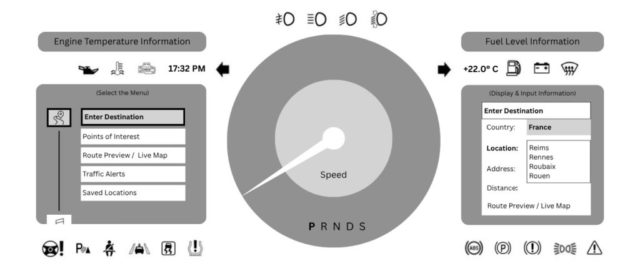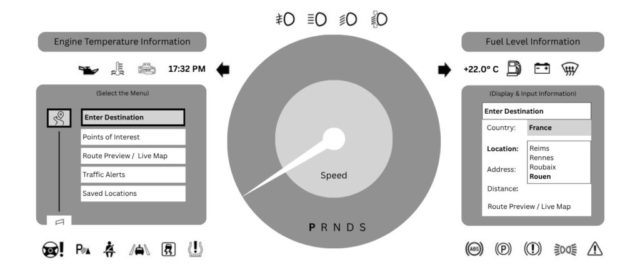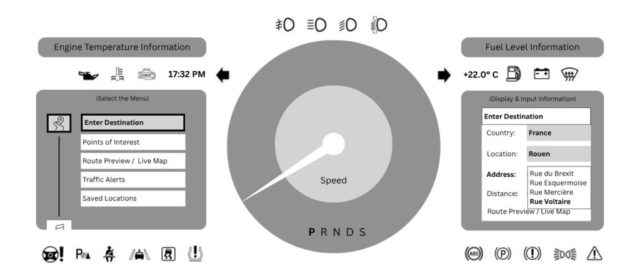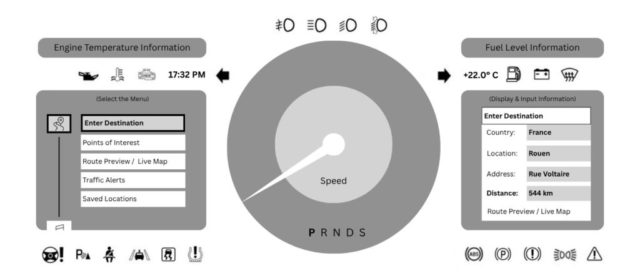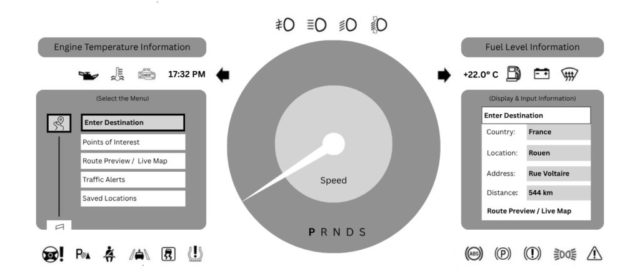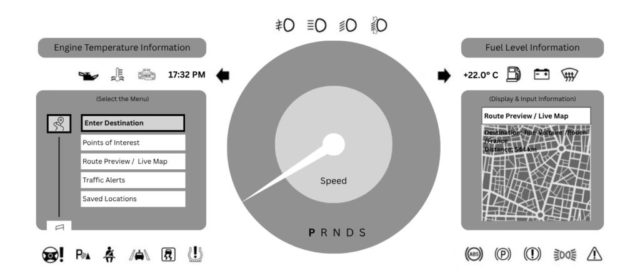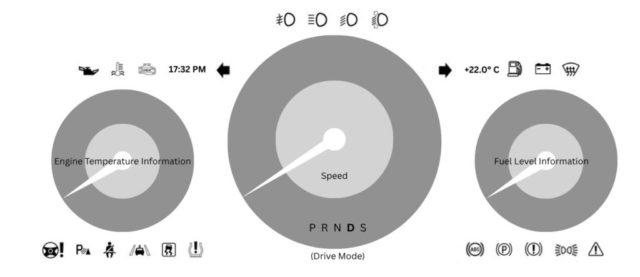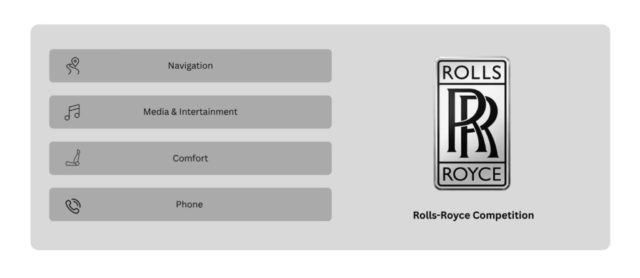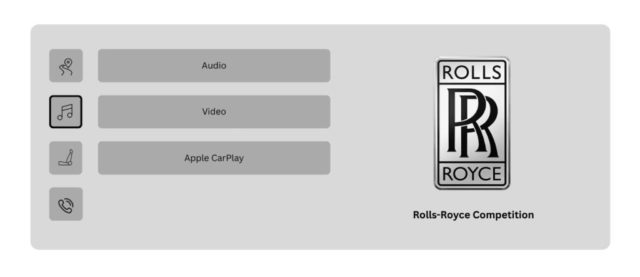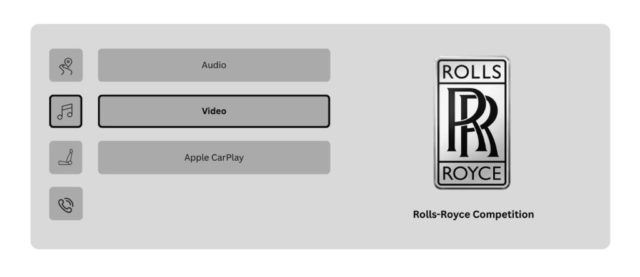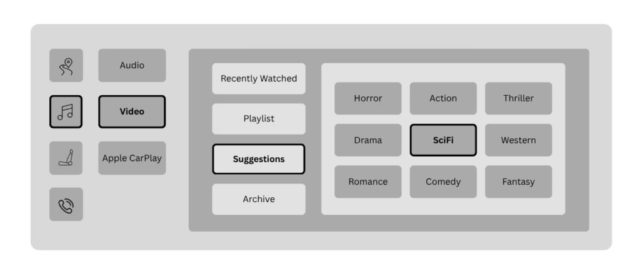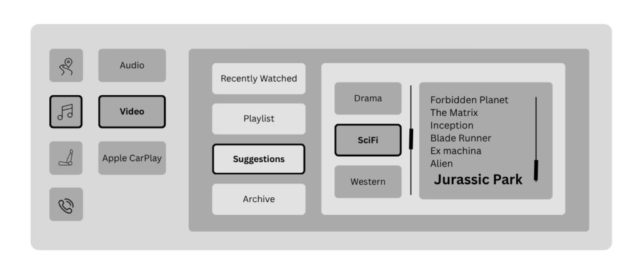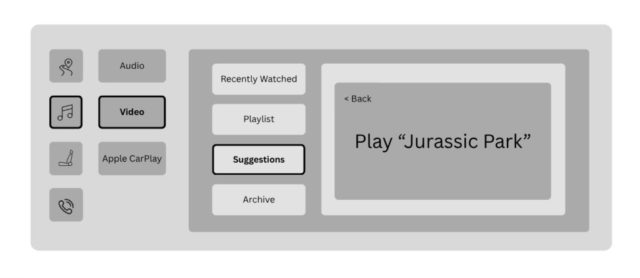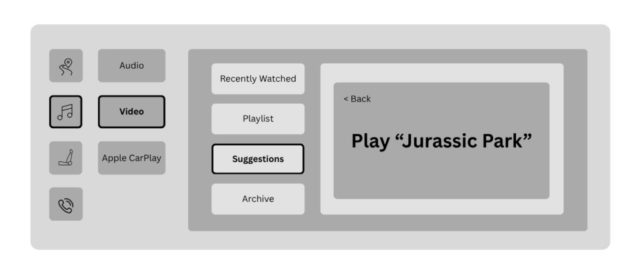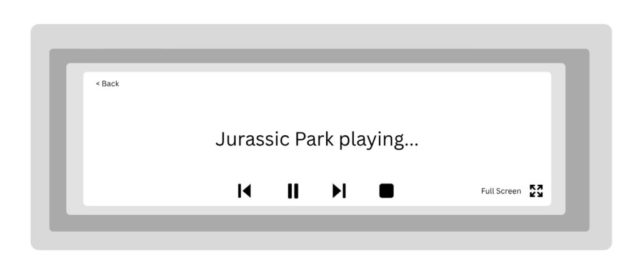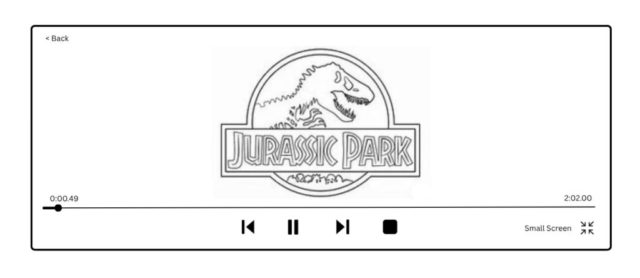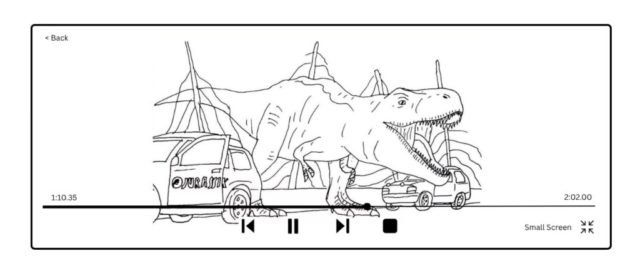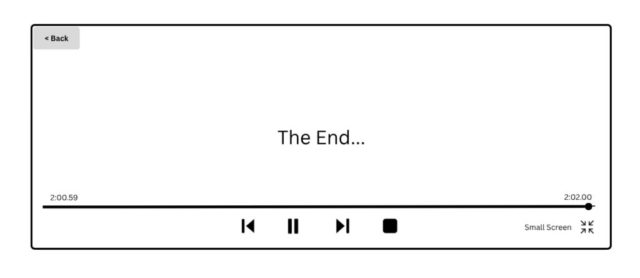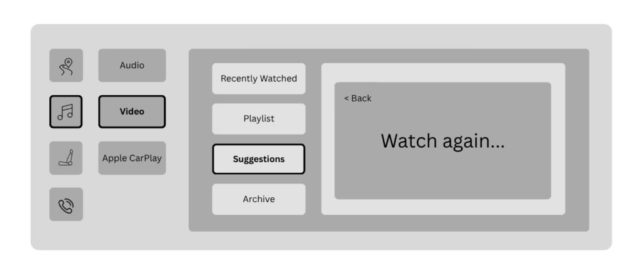Infotainment System UX – The Rolls Royce Competition
The Rolls Royce Competition model was born in 2010 in a workshop using basic Windows tools at our disposal to create houses, buildings and everything we could think of with simple software tools.
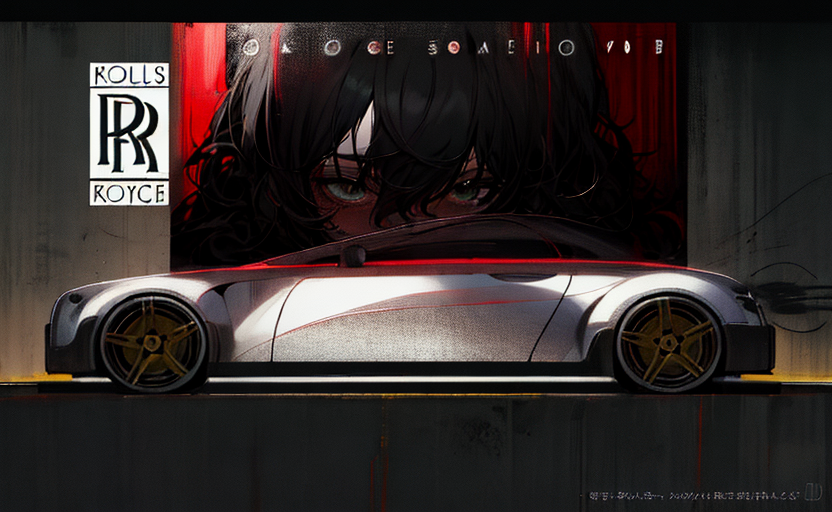
Project Overview
The Vision Behind The Rolls-Royce
Competition
The Rolls Royce Competition is a 650 horse power and a 310 km/h top speed high-performance sports car for urban luxury seekers.
I took this car model as the first example of an Automotive UX case study. It was born in 2010 in a workshop using basic Windows tools. Rolls-Royce is known as a luxury brand, it ventured into SUVs, but it does not produce sports cars. I wanted to add the sports car element with luxury in this car model, and give it a distinct unique line.
The peculiarity of this car model is the interior design with a dual-dashboard and the panoramic view shape of the windshield. There is no metal ceiling above the passengers, the visibility and the open sky aspect give passengers the feeling of total freedom, regardless of the climatic and weather conditions.
The infotainment system in the interior is designed to be minimal, fast, and tactile, inspired by the Ferrari Purosangue’s dual-screen layout.
Dual Dashboard & Panoramic Views
Experimenting With New Interior Design
Concepts
Shaping a unique User Experience driven by a 360° panoramic view.
This layout introduces a refined dual-dashboard configuration separating the driver and passenger into two distinct digital environments. Unlike traditional infotainment systems that centralize control, the screen layout here prioritizes individual access, giving each occupant their own dedicated interface.
The driver maintains focus with minimal distraction, while the passenger transforms into a true co-pilot, enjoying equal access to confort and media controls. No more leaning or reaching into shared zones — the passenger’s screen is seamlessly integrated in front of them, within ergonomic reach.
Both users benefit from dual interaction modalities: rotary dial navigation and touch input, designed for intuitive use whether gloved or barehanded.
This system was envisioned in 2010 with the first sketches of the Rolls Royce Competition model as a first-class cabin experience, not just in looks but in functionality: two digital suites, side by side, harmonized yet private. It’s dual luxury, not divided attention — an evolution in high-end user experience.

1. Discover
Stacking up against The Competition
The Rolls Royce Competition is a blend between sports cars and luxury car models. Many design philosophies shape the market with unique approaches and nuances.
Market Research
The Rolls-Royce Competition model is UX-heavy, comfort-centric, and digital. You can benchmark it against infotainment leaders like Mercedes-Benz, BMW and Tesla.
Mercedes-Benz Features:
BMW Features:
Tesla Features:


SWOT Summary
How can users interact with navigation without distraction at 130 km/h in an urban setting?
This infotainment system doesn’t place the passenger interface on the center console, like MBUX or BMW iDrive. Instead the driver and passenger each have their own independent screen environments, clearly separated.
The passenger dashboard is positioned in front of the passenger; it is not shared via the center stack. The passenger is treated as a co-pilot, not a secondary driver tool. The passenger dashboard offers control over comfort, media, and even ambient settings, with no need to reach over or share the central space.
This design enhances user comfort and focus for both occupants, it avoids input conflicts (no fighting over the same controls). It mirrors the bespoke first-class cabin experience, like two VIPs flying side-by-side. This implementation pushes the dual-dashboard concept further than most brands today. It’s a stronger expression of passenger agency and personalized interaction.
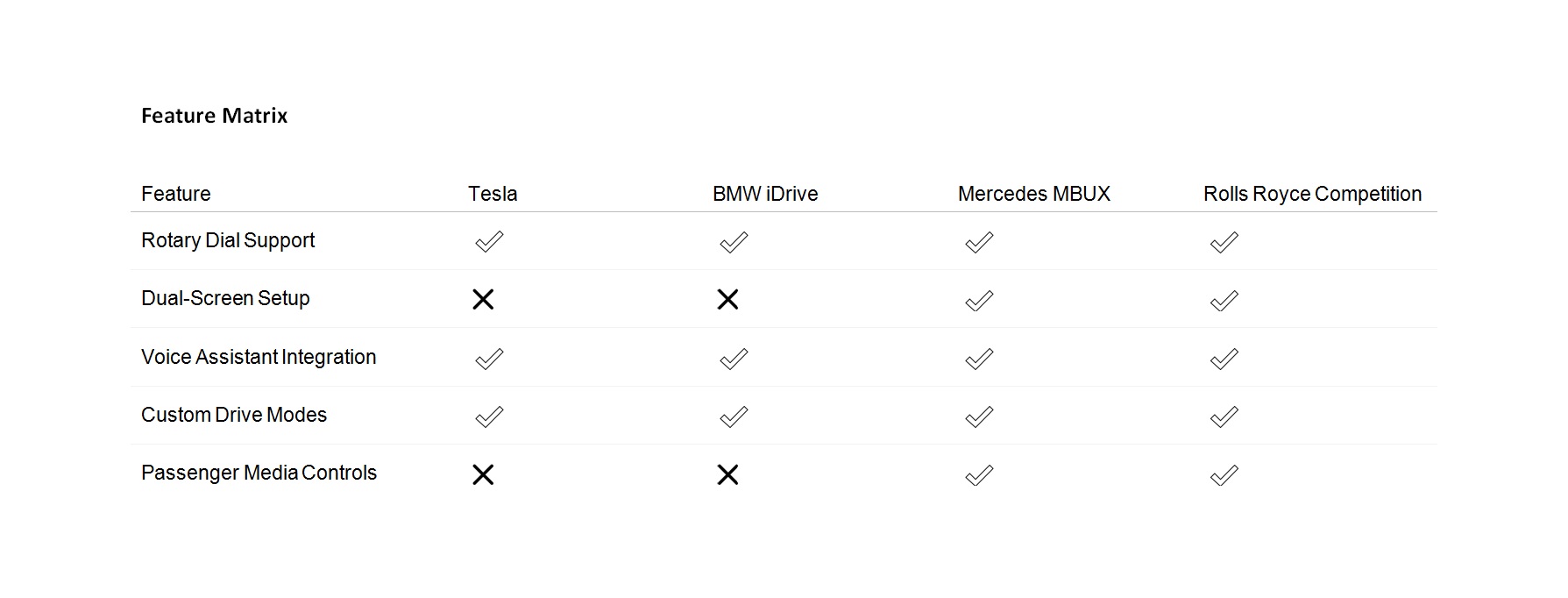
2. Define
Designed for the tech-savvy urban luxury seekers
The Rolls Royce Competition is a blend between sports cars and luxury car models. It’s designed for rugged individualists, and urban tech-savvy luxury seekers.
FOR PROFESSIONALS WITH EXCLUSIVE DESIGNS
User Personas
Lorem ipsum dolor sit amet, consectetur adipisicing elit, sed do eiusmod tempor incididunt ut labore et dolore magna aliqua. Ut enim ad minim veniam, quis nostrud exercitation ullamco laboris nisi ut aliquip ex ea commodo consequat.
USER RESEARCH
Drivers of the Rolls Royce Competition are rugged individualists, urban, tech-savvy and successful professionals who differentiate themselves from their peers with exclusive design.
DESIGN GOALS
- High visibility with minimal eye movement
- Glove-friendly touchpoints
- Split-screen support for passenger interaction
Lorem ipsum
Lorem ipsum dolor sit amet, at mei dolore tritani repudiandae.
User Flows
Lorem ipsum dolor sit amet, at mei dolore tritani repudiandae. In his nemore temporibus consequuntur, vim ad prima vivendum consetetur. Viderer feugiat at pro, mea aperiam
Lorem ipsum dolor sit amet, at mei dolore tritani repudiandae. In his nemore temporibus consequuntur, vim ad prima vivendum consetetur. Viderer feugiat at pro, mea aperiam
Information Architecture
Lorem ipsum dolor sit amet, consectetur adipisicing elit, sed do eiusmod tempor incididunt ut labore et dolore magna aliqua. Ut enim ad minim veniam, quis nostrud exercitation ullamco laboris nisi ut aliquip ex ea commodo consequat.
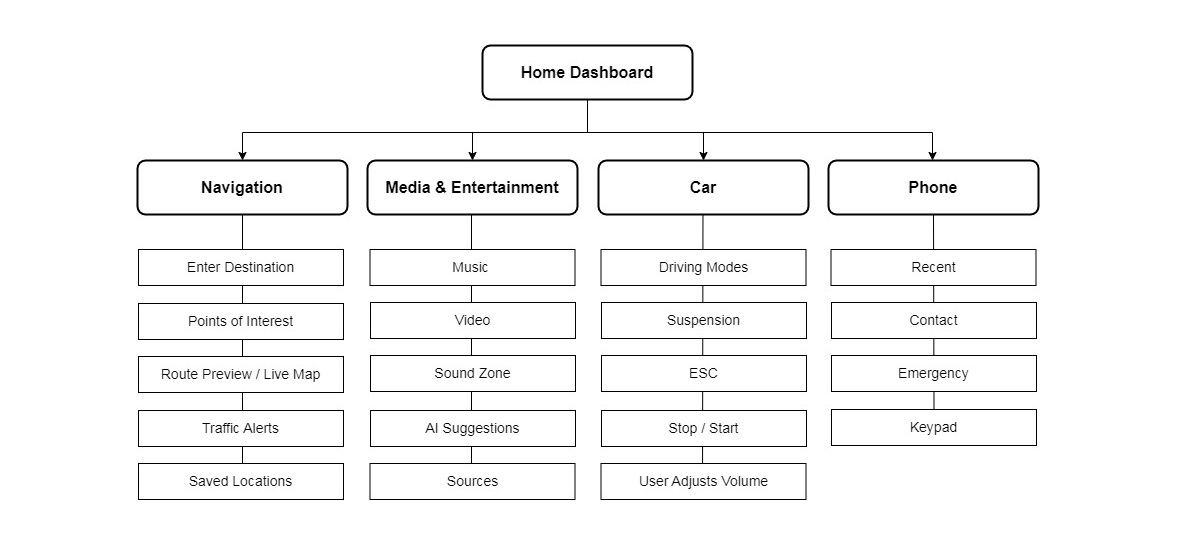
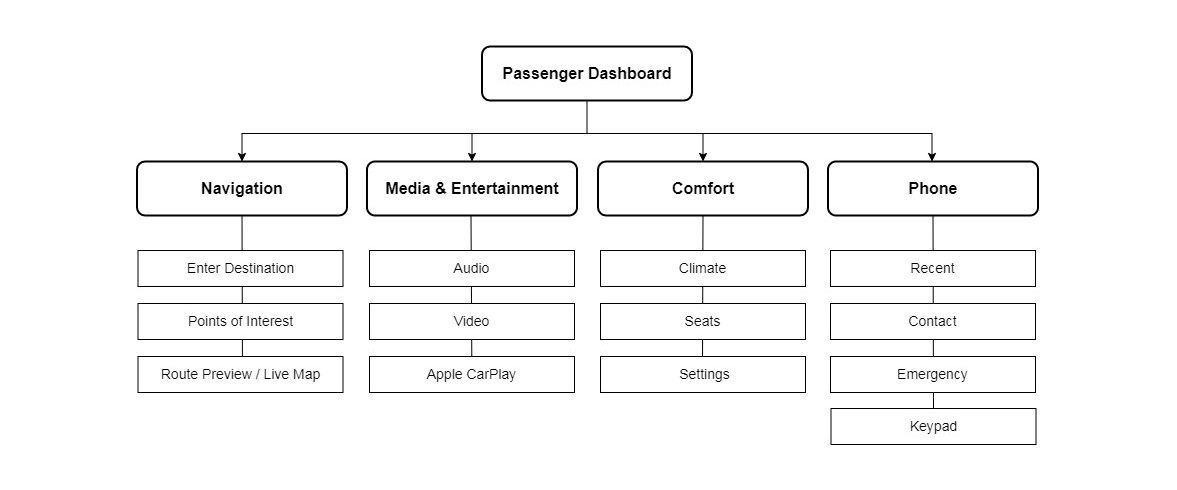
3. Interaction Scenarios / Microinteractions
Enjoy the best flows and interactions combined together
Showcasing the dynamic user flows and microinteractions that define the in-cabin experience of the Rolls-Royce infotainment system.
The following visual journeys explore how drivers and passengers engage with core functions — such as navigation, media, and vehicle settings — through intuitive sequences that reflect real-world usage inside a high-performance luxury vehicle.
From rotary dial navigation to passenger touch interactions and contextual voice commands, each scenario is carefully mapped to prioritize clarity, feedback, and minimal distraction.

These sketches illustrate key user flows within the infotainment system, demonstrating how seamless interactions are achieved across both driver and passenger touchpoints.
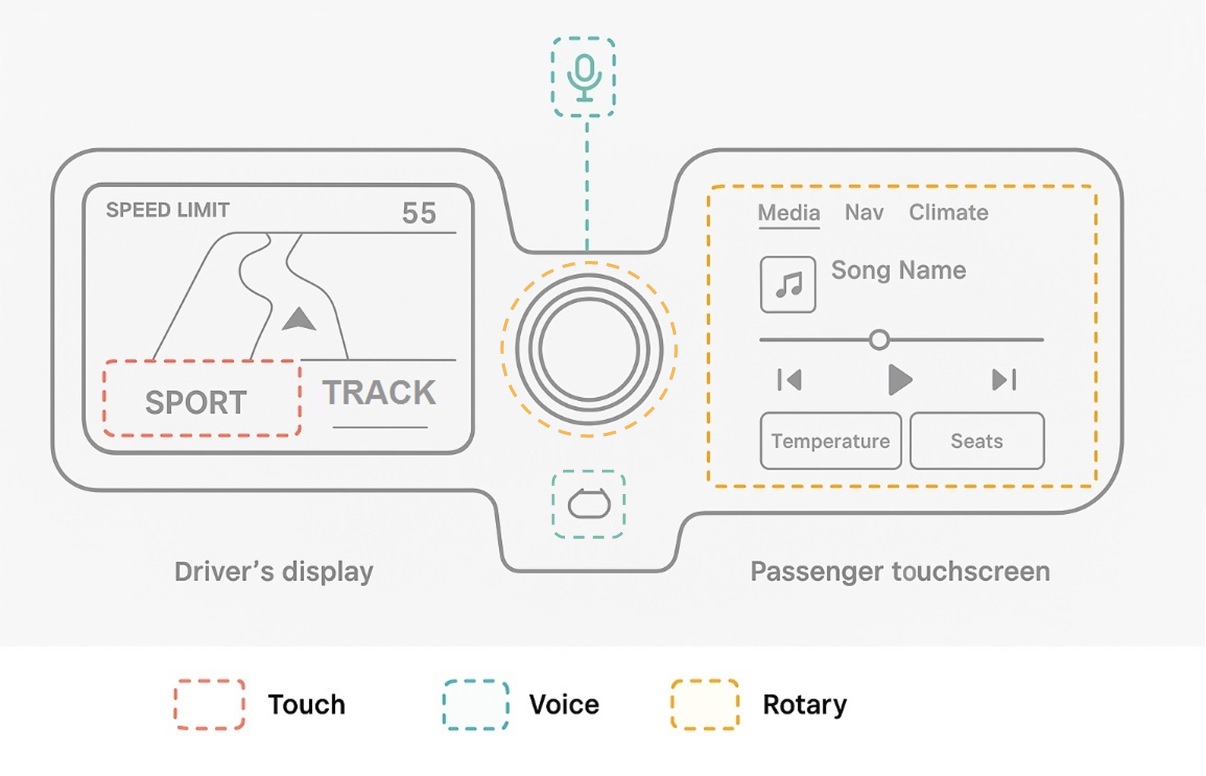

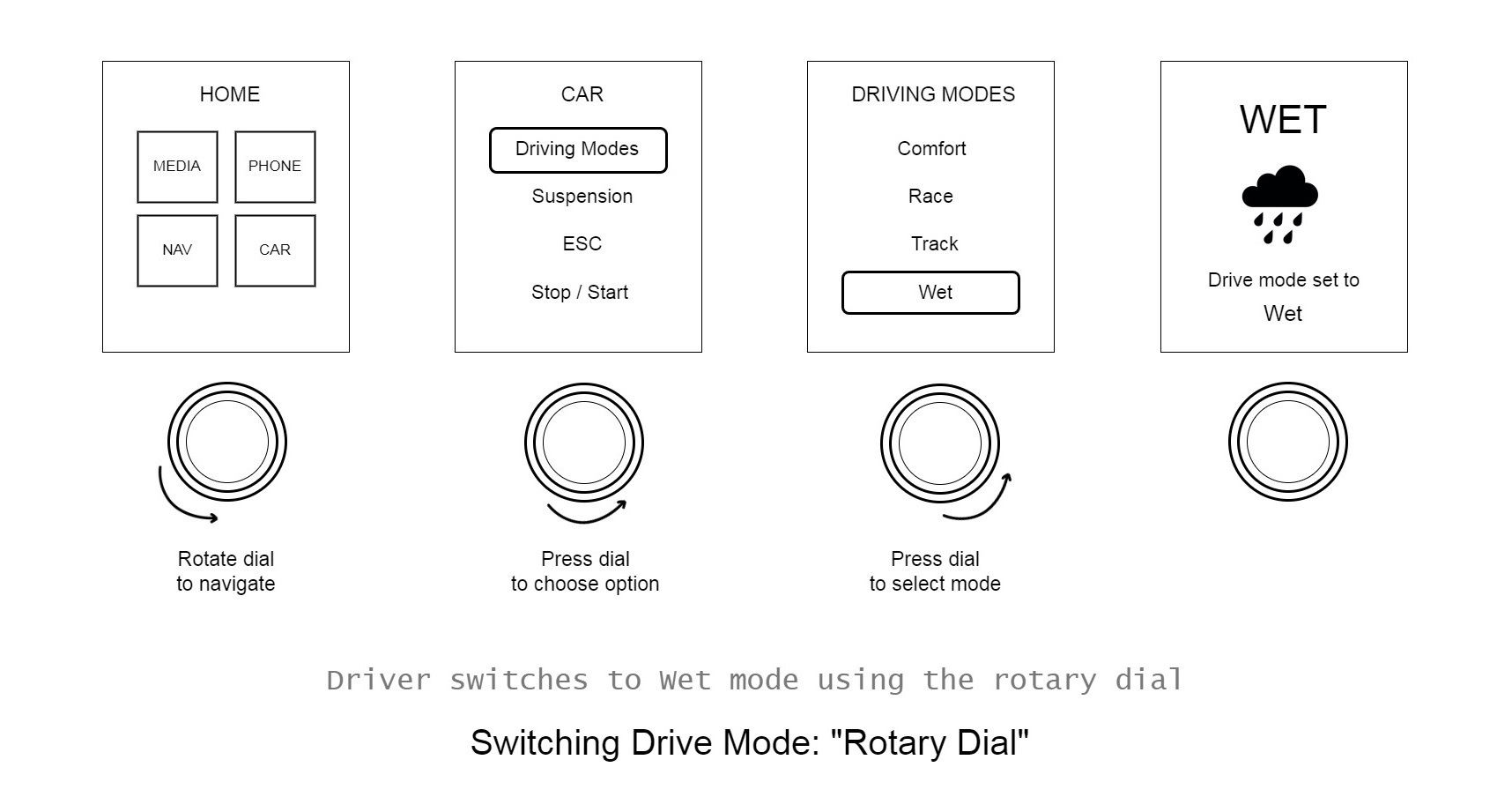
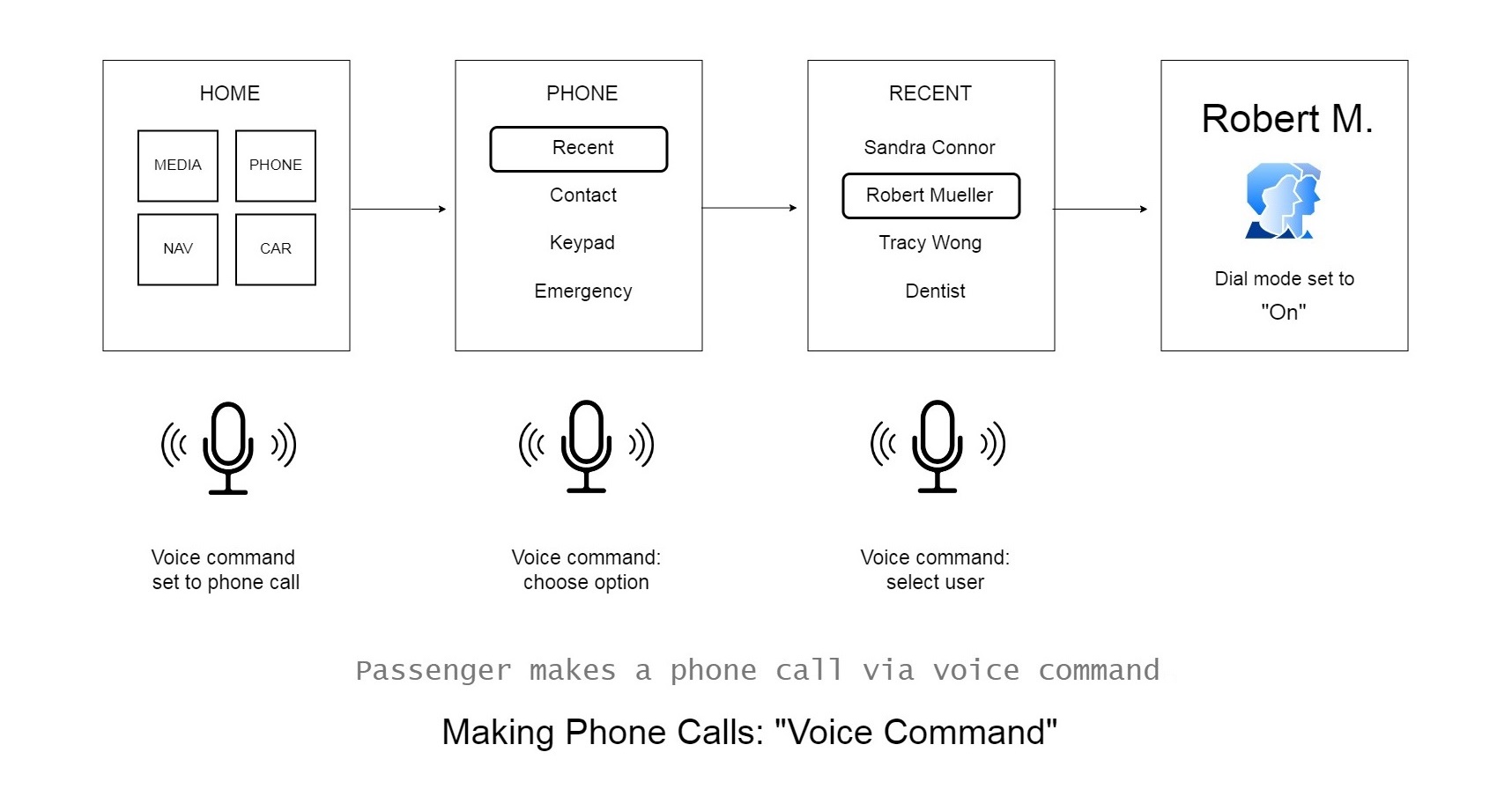
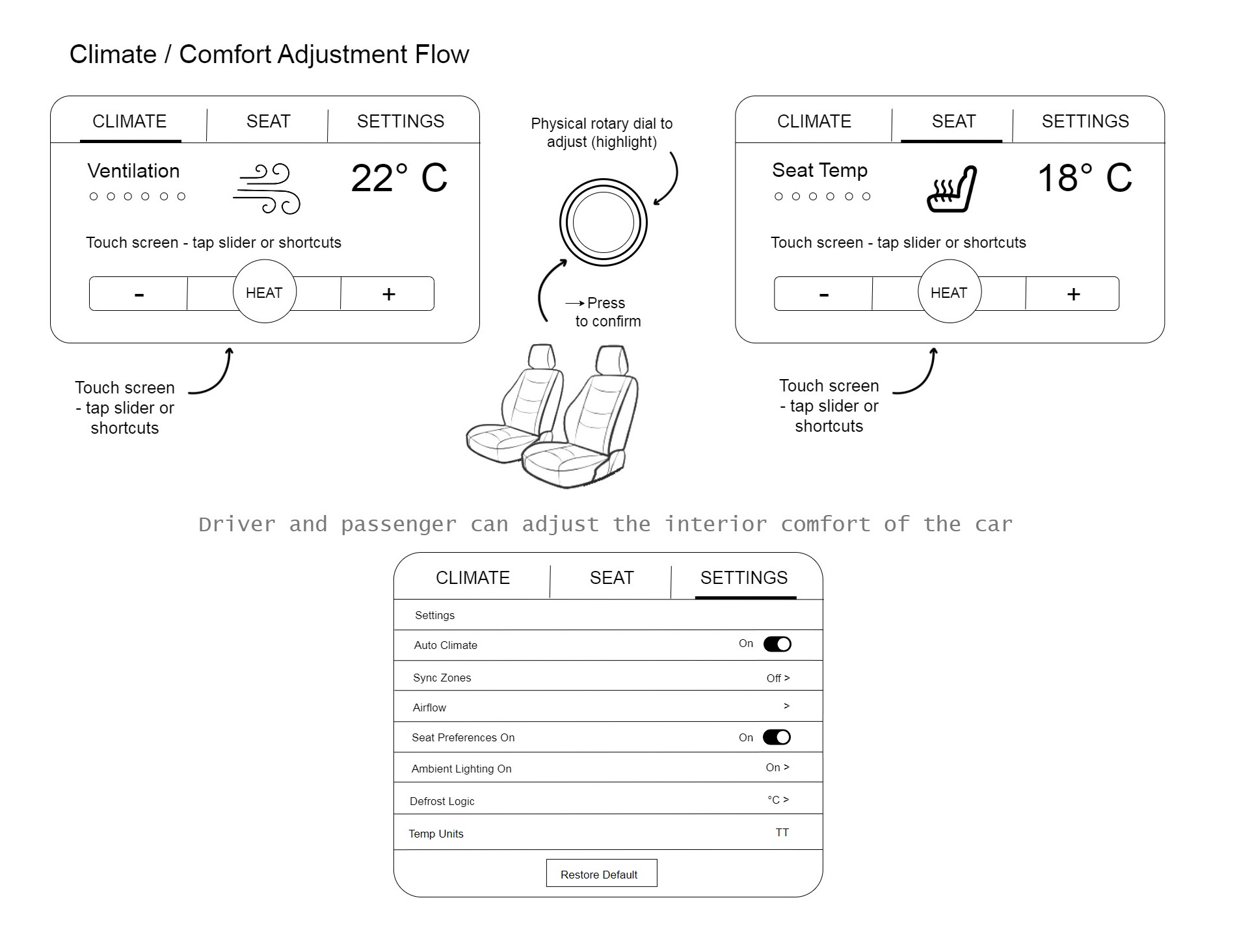
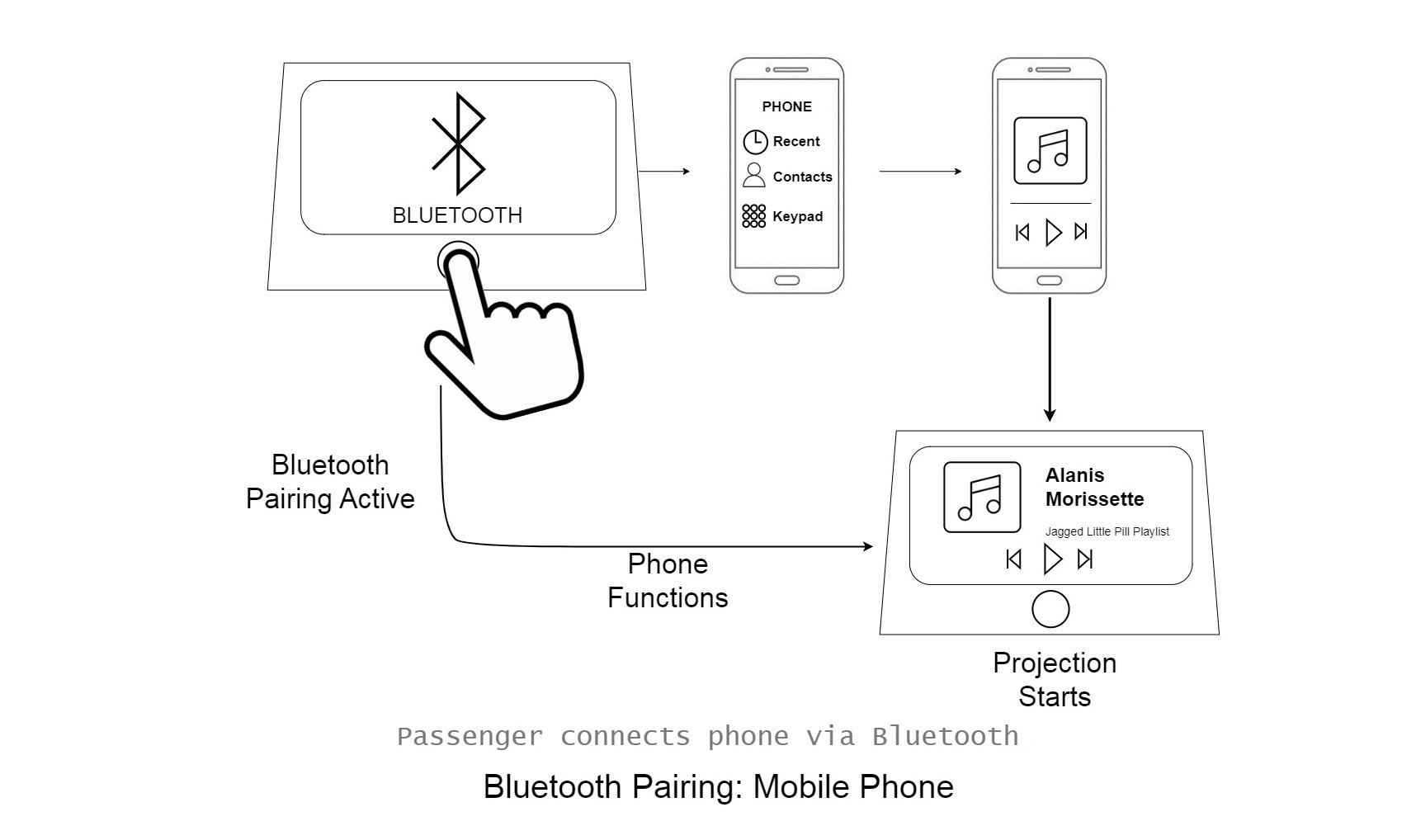
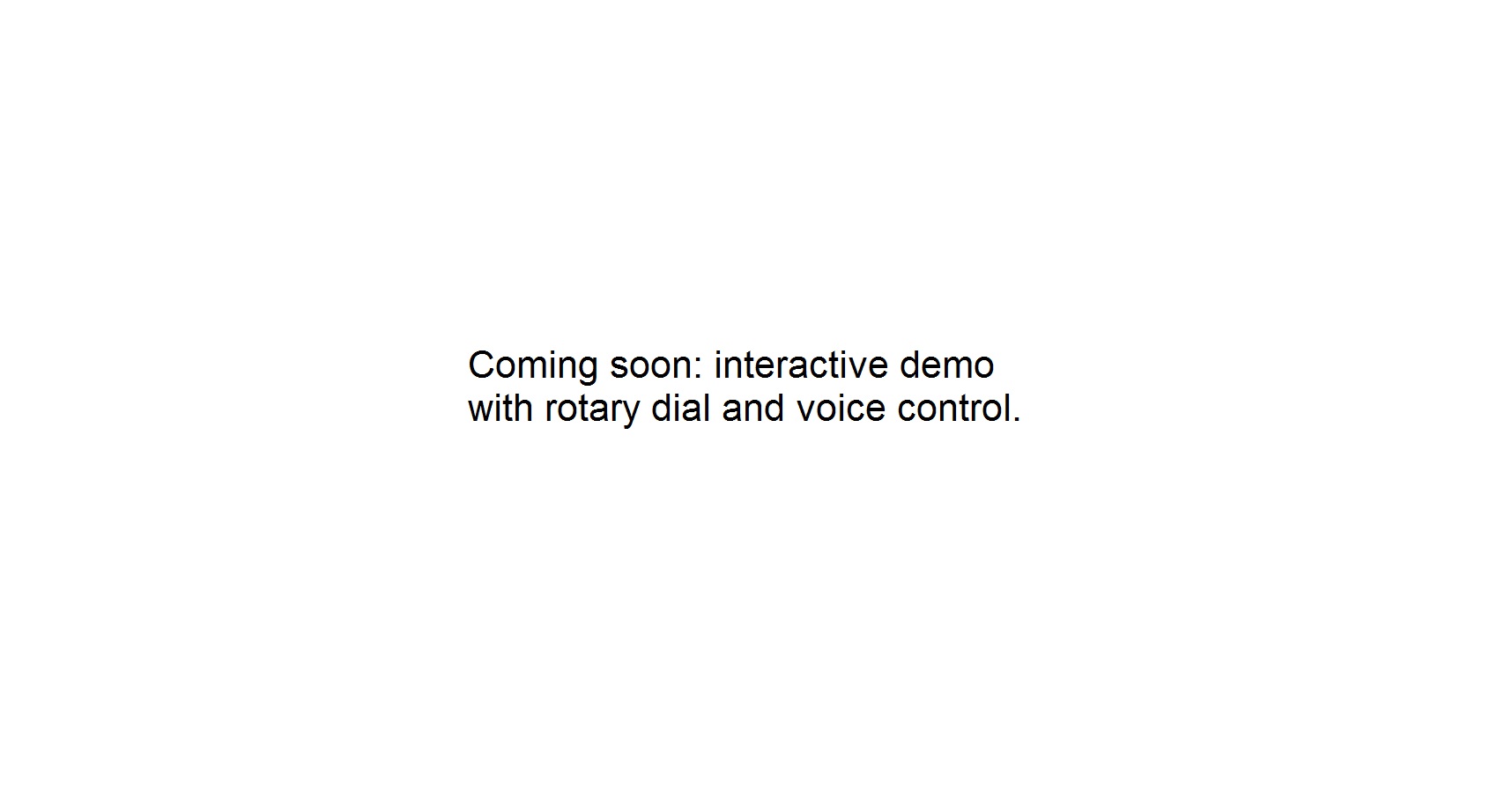
4. Refine
Translating Brand DNA into Great User Experience
Each brand is unique, its DNA must be taken into account in the designs, fingerprints and UX/UI choices.
Brand DNA
Before presenting the final UI screens, it’s essential to highlight how the Rolls-Royce brand DNA guided each design decision. In a vehicle defined by refinement, elegance, and effortlessness, the digital experience must feel just as luxurious as the materials surrounding it.
To reflect this, the infotainment system was crafted with:
- Minimalist elegance — clean, unhurried layouts with generous white space
- Subtle interaction feedback — smooth transitions, refined rotary gestures, and gentle animations
- Dual-screen harmony — a sense of parity and dignity between driver and passenger environments
- Exclusive personalization — features and settings that adapt discreetly to each user’s preferences
- Timeless over trendy — avoiding overdesigned elements in favor of understated visual luxury
Every element was designed to feel invisible yet intuitive, reflecting the Rolls-Royce philosophy: “Power in reserve. Presence without noise.”
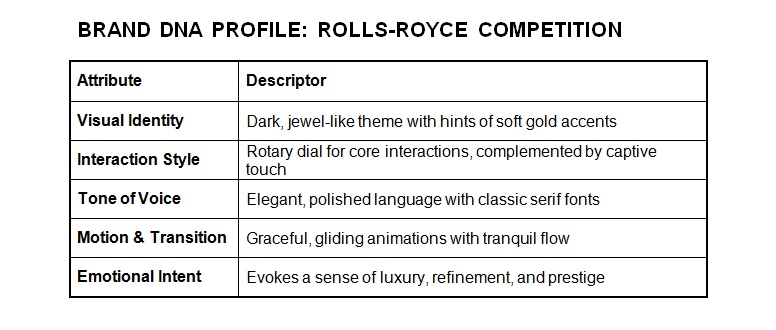
Wireframes & Prototypes
The driver instrument cluster is aligned with the traditional 3-gauge design that defines the dashboard of Rolls-Royce. We wanted to remain faithful to the design by maintaining the details and elements that distinguish the typical Rolls-Royce design from other luxury brands.
The driver turns on his car and the screen automatically switches from the car model badge to the dashboard. Today he is planning a long 6-hour trip that will take him from Cologne, Germany to Rouen in the north-east of the French capital. The dashboard calculates the distance and programs the route of the trip that will take him at his final destination.
Next to him is his best friend who accompanies him and never misses an opportunity to visit new locations. From his console he can consult the same trip data that are available from the pilot’s dashboard. He can see the distance of the trip from his dashboard and its duration.
He finds that he can watch 2 movies of 2 hours each for the trip, and take advantage of the last 2 hours to chat with his travel companion. He can also listen to music with his headphones that are connected to the dashboard by a Bluetooth connection. The first film on the menu is the classic Jurassic Park from 1993.
5. Final Product
Enjoy the best design and functions combined together
Lorem ipsum dolor sit amet, consectetur adipisicing elit, sed do eiusmod tempor incididunt ut labore et dolore magna aliqua. Ut enim ad minim veniam, quis nostrud exercitation ullamco laboris nisi ut aliquip.
Emotional Design
Lorem ipsum dolor sit amet, at mei dolore tritani repudiandae. In his nemore temporibus consequuntur, vim ad prima vivendum consetetur. Viderer feugiat at pro, mea aperiam
Design System
Lorem ipsum dolor sit amet, at mei dolore tritani repudiandae. In his nemore temporibus consequuntur, vim ad prima vivendum consetetur. Viderer feugiat at pro, mea aperiam
Style Guide
Lorem ipsum dolor sit amet, at mei dolore tritani repudiandae. In his nemore temporibus consequuntur, vim ad prima vivendum consetetur. Viderer feugiat at pro, mea aperiam

6. UX Heuristics & Accessibility
Applying Heuristic
Principles In UX/UI Designs
Solving problems, design and product usability with pragmatic methods.
The following UX heuristic evaluation draws inspiration from the Ferrari Purosangue’s dual-dashboard infotainment architecture. It’s a layout that aligns closely with the design philosophy of the Rolls-Royce Competition prototype showcased in this portfolio.
Although the Ferrari model served as a real-world benchmark, the interaction flows and usability principles evaluated here are grounded in my own original system, which was conceptualized years earlier (2010).
This evaluation aims to validate the user experience through industry-recognized heuristics adapted for a luxury, dual-zone infotainment environment.
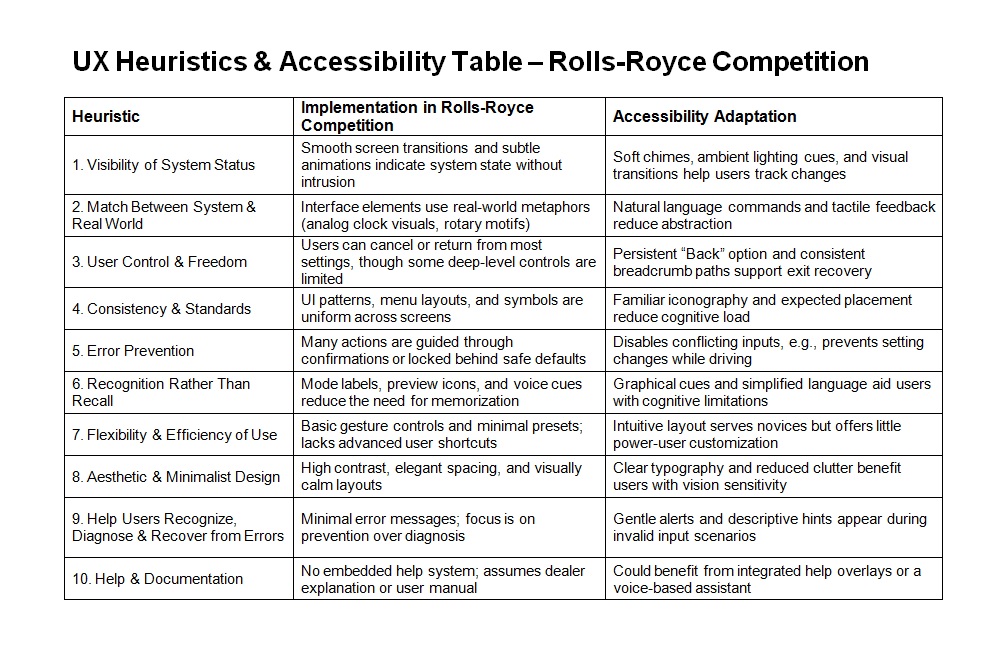
The infotainment system of the Rolls-Royce Competition was evaluated against Jakob Nielsen’s 10 usability heuristics to assess its user experience performance. True to the brand’s legacy, the system emphasizes elegance, predictability, and minimal cognitive load, offering a calm, curated experience for discerning luxury drivers.
While its interface avoids overwhelming the user, it also deprioritizes configurability and real-time performance feedback in favor of consistency, visual harmony, and real-world metaphor alignment (e.g., analog clock aesthetics, natural language cues).
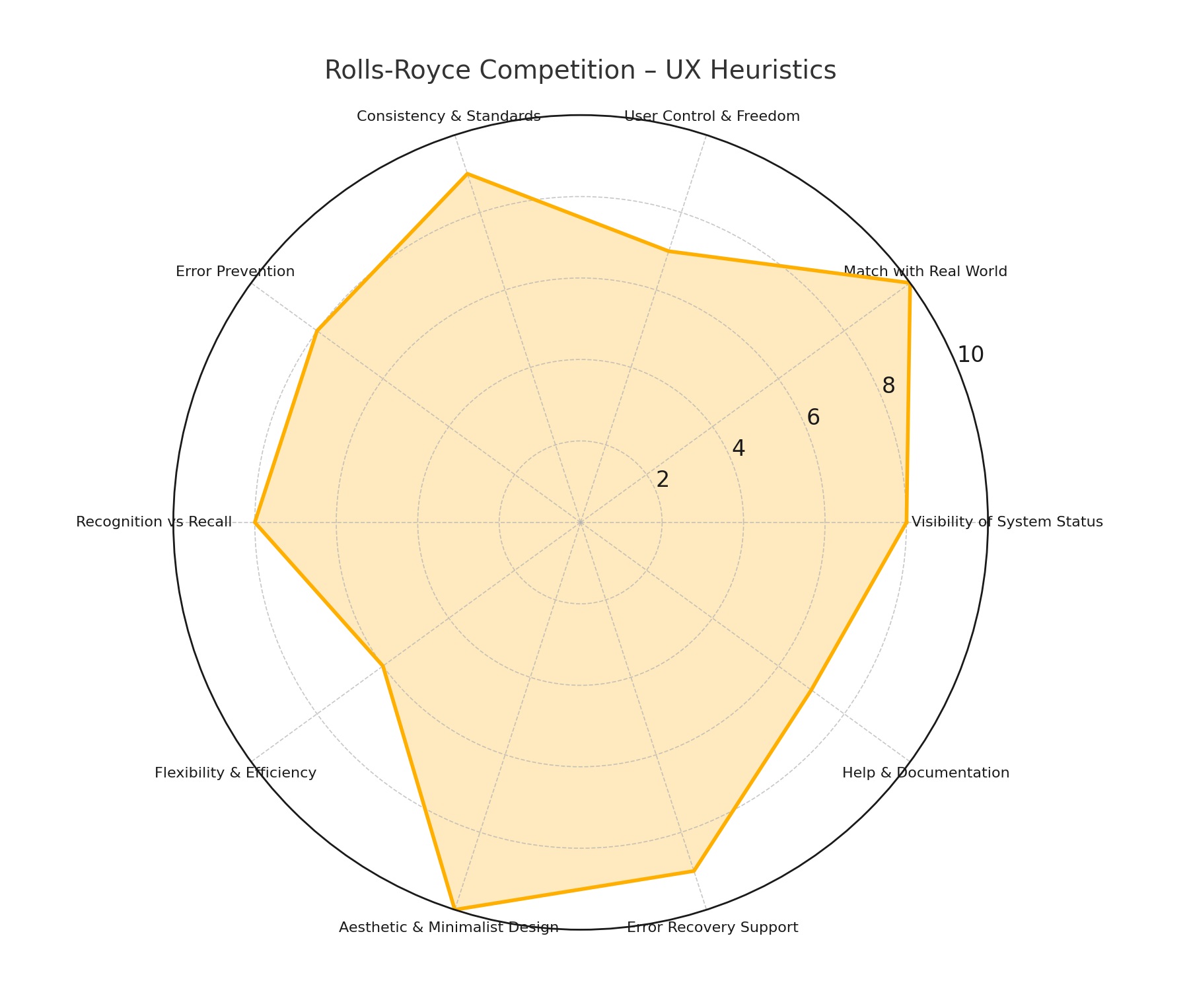
7. Reflection & Next Steps
What I Learned & The Big Takeaways
What’s next, what needs to be worked on: My final thoughts.

